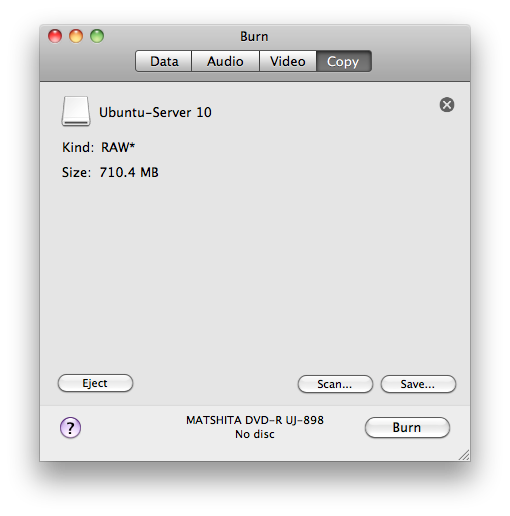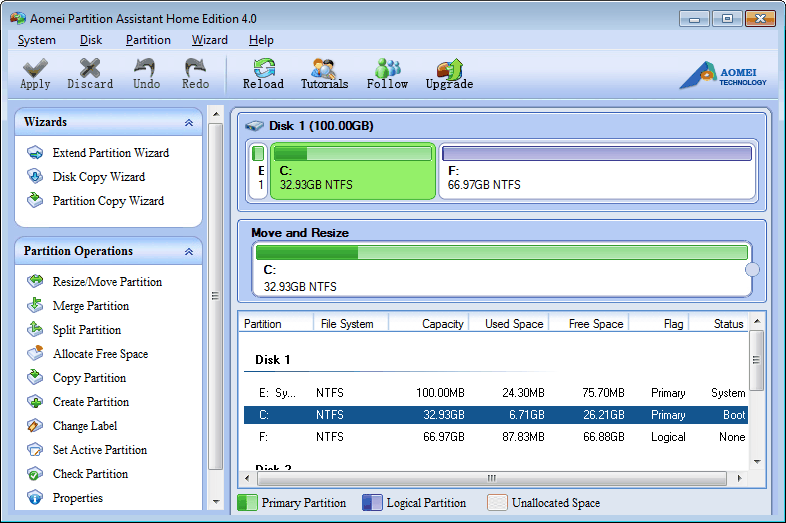Make Disk Image
- Macrium Reflect. Currently, Macrium Reflect known as the most polished free disk image software.
- The term is also a reference to the.iso file extension for disc-image files. Creating an ISO image is an effective way to back up data on an optical disc. To access the data in an ISO image, you.
Create a blank disk image for storage You can create an empty disk image, add data to it, then use it to create disks, CDs, or DVDs. In the Disk Utility app on your Mac, choose File New Image Blank Image. Enter a filename for the disk image, add tags if necessary, then choose where to save it.
Macrium Reflect can create file backups as well as disk images. However, for this tutorial I’ll take you through the steps required to create a full image of ‘Drive C’ using the backup image wizard. After completing these steps you will have created an image and saved your options as a XML definition file for easy re-running.
XML definitions provide a convenient way to store your backup options. Using an XML definition you can schedule a backup, generate a VBScript file for complex scenarios or simply create a desktop shortcut for instant running of your backup by clicking the shortcut icon.
OK, let’s begin…
Start Reflect and take the option ‘Create a backup image…’ to start the backup wizard.
. Click ‘Next’ on the first introductory wizard page. On the second wizard page select ‘Full’ as the image type and click ‘Next’
I’ll cover the other options, ‘incremental’ and ‘differential,’ in a future tutorial.The next page shows your disk partitions (drives). You can save multiple partitions from multiple disks in the same image file but for this example click drive (C:) in your list then click ‘Next’
You now need to select where you want to store your image file.
Reflect can store images on one or many DVDs but it is far better to choose a local or network drive. By using a local or network drive you can easily access your image files for restoring and you can browse your images in Windows explorer. This isn’t possible if the image file spans more than one DVD.
It’s best to create a new directory for your images. Click the dropdown list for ‘Local Hard Disk’ and select ‘Browse for folder’. This opens a standard windows directory selection dialog. Navigate to the drive where you want to store the image file and click the ‘Make New Folder’ button. Name this folder something meaningful, such as ‘Drive C Images’ and click ‘OK’ in the dialog to select it.
Leave the ‘Use image ID as the file name’ option checked and click ‘Next’.
An image ID is used to identify a backup set. A backup set comprises of a full backup and all subsequent Incremental and/or differential backups. It is a unique 16 byte Hex value (128 bit) and guarantees that you won’t have any file name conflicts when creating multiple backups in the same directory.The final page shows a summary of your selections. The ‘Advanced’ button allows you to configure compression level, password / encryption and many other options. For this example we’ll just leave them as the defaulted values and click ‘Finish’
You now have the option to save this definition and / or run this image now. Change the file name to ‘C Full Image’, leave both options checked and click ‘OK’.
That’s it! Your backup will now start and you have saved the definition of this backup as ‘C Full Image.xml’.
To re-run this backup simply select the XML definition and click the ‘Execute’ button.
You can also create a desktop shortcut to run the backup by clicking the shortcut icon. Simply click the ‘Create Desktop Shortcut’ button
In the next tutorial we’ll create an incremental image of this full image and schedule these to run automatically to keep your PC protected.
A Disk Image is a mirror of your logical drive that is stored in one file. This article is fully dedicated to this theme and here you will find out:
Make Disk Image
- what is a disk image
- how to use it
- how to create disk image free
Are you ready? Let's read!
How can you use a disk image
The disk image is a very useful thing.
Firstly, you can use it to have a duplicate of your hard drive, especially if you already have some problems with it. This will protect you from the inevitable loss of any data, OS parameters, etc.
Secondly, the disk image is also very useful for network administrators when they need to work with multiple PCs. For example, one of the computers used may have a hard disk that is out of order and not to configure new configurations, applications, etc. for a long time. You can just do a system image recovery on Windows 10.
Disk images can be a good idea
There are two main situations when it will be good to use an image created by DiskInternals VMFS Recovery:
- If the disk has started to “die”: when bad blocks appear, the process progresses quite quickly. Creating an image preserves data that is still being read.
- If you want to accelerate data recovery from a damaged disk. Because of bad sectors, the “reading” of data can be performed only once, not twice, like with healthy disks, when scanning happens and then saves (preview and re-scanning are also included).
How to create a disk image for free
Create a disk image easily with DiskInternals software! DiskInternals software has a free feature that can create a disk image in Windows (all versions), in all file systems and storage devices. This free feature has no competition, so do not waste time and get disk image software for free.
You can install DiskInternals Uneraser, Partition Recovery, VMFS Recovery, RAID Recovery, NTFS Recovery, EFS Recovery, Linux Recovery or Linux Reader. Any of these programs can be used as free imaging software.
A detailed guide for disk image creation
Make Disk Image Drive

Using DiskInternals software, you can create a disk image in Windows 10, 7, 8 or any other versions.
This brief guide will help you:
- 1. Open the DiskInternals program.
- 2. Close the Recovery Wizard (it will automatically load).
- 3. Left-click on the disk (the one you want to make an image of). Then, left-click again on the Drives tab and select Create Image.
- 4. Click the 'Browse ...' button to specify where the file to go. Now select one of the following options:
- Entire disk contents: Save the entire contents of the disk to a file. Due to FAT32 restrictions, files larger than 4.3 GB should only be saved to NTFS partitions or to network drives.
- Boot sector (first 512 bytes): The image will contain only the first sector (512 bytes).
- Selected region: The image file will contain the selected region.
The inscriptions below mean the following:
Start with the sector: the sector from which you want to start copying.
A number of sectors: the number of sectors to be saved.
* Using the Boot sector and Selected region you can select the start point of the disk image and its length.
- 5. Click the Save button. Next, the disk image in Windows 10 will be created. This is the last point; now just wait for the creation of the Windows disk image to complete.
How to use disk image:
- 1. Skip Recovery Wizard. Click on the Drives tab and choose Mount Image.
- 2. A new window will give you the opportunity to choose among RAW Disk Image, Containers and Hikvision NAS Folder. Choose RAW Disk Image and click on the Next button.
- 3. Browse for the disk image and click the Open button. The mounted disk image will appear on a hard drives list.
- 4. Double-click on the mounted disk image and select Reader mode.
- 5. In the new window, you will be able to get access to your data.
- BitLocker
- Forensic Recovery
- Nas Recovery
- Search by signatures
- Full size preview
- RAID
- VMware, VirtualPC
VirtualBox, Parallels - Create disk image with free software
- Deduplication: how to enable it
- Deduplication: how to restore or undelete files
- Support for APFS: Transfer and View Your Files Any Time
- APFS read-only mode, or why iOS data recovery is impossible
- The First Free APFS Reader for Windows
- HFS reader on Windows for FREE Linux Reader
Create System Image Windows 10
 MSSQL RecoveryMySQL RecoveryAccess RecoveryMail Recovery - all in oneOffice Recovery - all in oneExcel RecoveryWord RecoveryAccess RecoveryOutlook Recovery
MSSQL RecoveryMySQL RecoveryAccess RecoveryMail Recovery - all in oneOffice Recovery - all in oneExcel RecoveryWord RecoveryAccess RecoveryOutlook Recovery